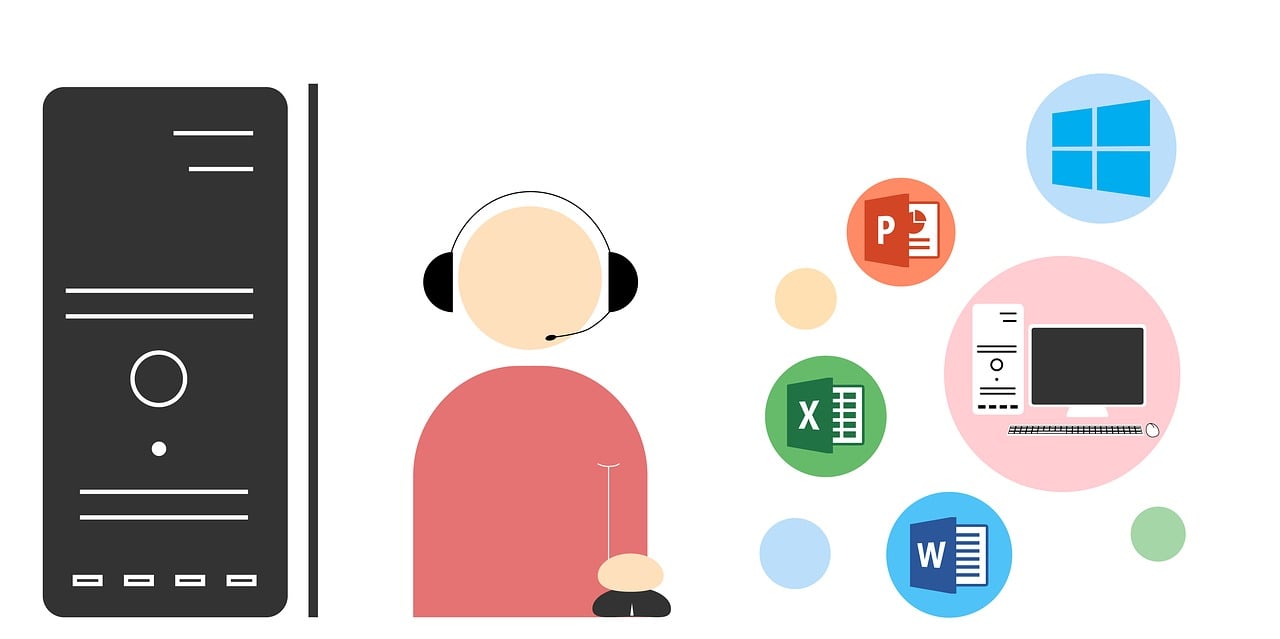How to Choose the Right Desktop PC for Your Needs: A Comprehensive Guide 2024
Introduction: In today’s digital age, desktop PCs remain a staple in homes, offices, and educational institutions around the world. Whether you’re a casual user, a creative professional, or a hardcore gamer, selecting the right desktop PC is crucial for meeting your specific needs and preferences. With a plethora of options available on the market, choosing the perfect desktop PC can be overwhelming. In this comprehensive guide, we’ll walk you through the essential factors to consider when selecting a desktop PC tailored to your requirements.
Understanding Your Needs: Before delving into the technical specifications and features of desktop PCs, it’s essential to assess your specific needs and usage requirements. Consider the following questions to help guide your decision-making process:
- What Will You Use the Desktop PC For?
- Determine whether you primarily need the desktop PC for everyday tasks such as web browsing, email, and document processing, or if you require it for more demanding activities such as graphic design, video editing, gaming, or programming.
- What Is Your Budget?
- Establish a budget range that aligns with your financial constraints and expectations. Keep in mind that desktop PCs come in a wide range of price points, from budget-friendly options to high-end configurations with premium features.
- Do You Have Space Constraints?
- Consider the available space in your home or office environment where the desktop PC will be located. Determine whether you prefer a compact form factor like a mini-tower or small form factor (SFF) PC, or if you have ample space for a full-size tower or all-in-one (AIO) desktop.
Factors to Consider When Choosing a Desktop PC:
- Form Factor:
- Desktop PCs come in various form factors, including towers, small form factor (SFF) PCs, mini-towers, and all-in-one (AIO) desktops. Choose a form factor that suits your space constraints, aesthetic preferences, and upgradeability requirements.
- Processor (CPU):
- The CPU is the brain of the computer, responsible for executing instructions and performing calculations. Consider factors such as clock speed, number of cores, and thermal design power (TDP) when selecting a CPU. Options range from budget-friendly processors like Intel Core i3 or AMD Ryzen 3 to high-performance CPUs like Intel Core i9 or AMD Ryzen 9.
- Graphics Processing Unit (GPU):
- The GPU, also known as the graphics card or video card, is essential for rendering graphics and images, especially in gaming, video editing, and 3D modeling applications. Choose a GPU that matches your usage requirements, whether it’s integrated graphics for basic tasks or dedicated graphics for gaming and multimedia production.
- Random Access Memory (RAM):
- RAM plays a crucial role in multitasking and overall system performance. Opt for a desktop PC with sufficient RAM capacity and speed to accommodate your workflow. Consider DDR4 RAM modules with higher frequencies for faster data transfer rates and smoother multitasking capabilities.
- Storage Options:
- Choose the right storage solution based on your storage capacity and speed requirements. Options include traditional hard disk drives (HDDs) for cost-effective storage and solid-state drives (SSDs) for faster boot times, application loading, and data access speeds. Consider hybrid storage configurations or NVMe SSDs for optimal performance and capacity.
- Operating System (OS):
- Select an operating system that meets your compatibility, familiarity, and software requirements. Options include Microsoft Windows, macOS, and Linux distributions like Ubuntu or Fedora. Consider factors such as software compatibility, user interface preferences, and security features when choosing an OS.
- Connectivity and Expansion:
- Evaluate the desktop PC’s connectivity options and expansion capabilities to ensure compatibility with your peripherals and future upgradeability. Look for features such as USB ports, audio jacks, HDMI or DisplayPort outputs, expansion slots, and Wi-Fi or Ethernet connectivity options.
- Display and Multimedia:
- Consider your display and multimedia requirements when selecting a desktop PC. If you plan to use the PC for gaming or multimedia consumption, opt for a high-resolution monitor with features like adaptive sync technology, high refresh rates, and HDR support. Additionally, consider audio capabilities such as built-in speakers or audio outputs for external speakers or headphones.
- Brand Reputation and Support:
- Research desktop PC brands known for their reliability, performance, and customer support. Consider factors such as warranty coverage, after-sales service, and user reviews when evaluating different brands and models. Choose a reputable brand with a track record of delivering quality products and responsive support.
Conclusion: Choosing the right desktop PC requires careful consideration of your specific needs, preferences, and budget constraints. By assessing factors such as form factor, processor, graphics, memory, storage, operating system, connectivity, and brand reputation, you can make an informed decision that meets your requirements and enhances your computing experience. Whether you’re a casual user, a creative professional, or a dedicated gamer, selecting the perfect desktop PC tailored to your needs is the first step toward unlocking its full potential for productivity, creativity, and entertainment.

